DAY6 Madagascar
Road trip🇲🇬
15/05/2025 - Ranomafana :
Trip plan: Half day to explore the national park : Today we are in the jungle : Hiking in the rainforest to spot : wildlife with endemic lemurs, frogs, chameleon + Waterfall…. Lunch at leisure - Drive to Ambalavao via Fianarantsoa : 70 km - about 3h 30 drive - you will visit the famous old town: historical place, traditional architecture - This place is classified Unesco worlds heritage. Carry on to Ambalavao - Arrival by the end of the afternoon - overnight at your hotel.
Malagasy coucal
The Malagasy coucal or Madagascar coucal (Centropus toulou) is a species of cuckoo in the family Cuculidae. It is found in Madagascar and in the Seychelles, where it occurs on Aldabra and was formerly present on Assumption Island and Cosmoledo. Its natural habitats are dense vegetation in subtropical or tropical moist lowland forests, mangrove forests, rough grassland, marshes and reedbeds.
Madagascar wagtail
Ranomafana National Park
The park's name is derived from the Malagasy words rano mafana ("hot water") due to the hot springs in the nearby town of Ranomafana.
Flora and fauna
The range of altitudes in the park produces a variety of forest types, including lowland rainforest and cloud forest.These forests support high levels of biodiversity. The park hosts 90 species of butterflies, 112 species of frogs, 22 species of lizards, 22 species of snake, and 118 species of birds, 30 of which are endemic to the park.Notable birds include ground rollers, blue vangas, short-legged ground rollers and brown mesites. 

As with all national parks in Madagascar, a local guide is required for visitors entering the park. It has seven hiking trails that vary in length from 10 to 20 km (6.2 to 12.4 mi) and offer opportunities for birdwatching, viewing lemurs, and seeing waterfalls.  Talatakely has well-defined paths and stairs, although sturdy shoes should be worn as the path can be slippery when wet. Specialist guides can be arranged through Centre ValBio for excursions.
Talatakely has well-defined paths and stairs, although sturdy shoes should be worn as the path can be slippery when wet. Specialist guides can be arranged through Centre ValBio for excursions.
Kayaking or canoeing can also be arranged and a hot springs pool is located in Ranomafana.
 |
Big waterfall in the park
|
Today, the same guide who took us on the Night Zafari last night will take us on a trail in the park for this morning. The trail was quite wet, so some of us still had to wear raincoats because there was a chance that it would rain again during the walk. The first amazing thing our guide showed us was a strange gecko. It was a satanic leaf-tailed gecko, which I couldn't see at first even though he pointed it out close up.
At that time,I just knew it looked like a leaf and took a picture. After searching the internet again, I realized that it was horrifically ugly. It truly lived up to its name, Satan. Uroplatus phantasticus
 |
| Picture from internet |
Uroplatus phantasticus, the satanic leaf-tailed gecko, eyelash leaf-tailed gecko or the phantastic leaf-tailed gecko, is a species of gecko indigenous to the island of Madagascar. First described in 1888 by George Albert Boulenger, U. phantasticus is the smallest in body of the Uroplatus geckos, though there is an ongoing debate[citation needed] as to whether one of its cousins, U. ebenaui, is smaller because of its shorter tail.

Once again we met Satan and it was a clear view of his form. Everyone was taking pictures with their phones until I couldn't get close and each shot took too long so I gave up.
The trail was relatively quiet indee , we didn't hear bird calls, however one time we see a sunbird , but it was in the flower which is the shadow, Guide saud it was a yellow billed sunbird, another bird I'd love to see when I'm here. Too bad it was in the shadows so we didn't get to see its beautiful colors.And again we had to spot a shadow of a vanga.
The yellow-bellied sunbird-asity (Neodrepanis hypoxantha) is a small species of passerine bird from the asity family. The male has black upper parts with a bluish sheen and yellow underparts, and is sometimes known simply as the yellow-bellied asity. It is found only in montane rainforests of Madagascar where it feeds on nectar that it sips from flowers, defending a good nectar source from other nectar-feeding birds. It is listed by the International Union for Conservation of Nature as "vulnerable" due to the diminution and fragmentation of its forest habitat.
Madagascar blue vanga
Bamboo lemur
The bamboo lemurs are characterized by a grey-brown fur, which varies by species. Their muzzles are short and their ears are round and hairy. Lengths vary from 26 to 46 cm (10 to 18 in), with tails just as long or longer, and they weigh up to 2.5 kg (5.5 lb).Bamboo lemurs prefer damp forests where bamboo grows. Although they can be active any time of the day, they are often active just after dawn. Though primarily arboreal, they sometimes come down to the ground. The Lac Alaotra gentle lemur or "bandro" (Hapalemur alaotrensis), which lives in the reed beds of Lac Alaotra, spends much of its time in water and can swim well, unlike other lemur species, which only venture to water to drink.

The lesser gentle lemurs live together in groups of three to five animals, which probably represent families composed of a male, one or two females, and their offspring. They communicate with a variety of sounds.
Gestation lasts 135 to 150 days and ends between September and January, when the female bears one to two young. These are weaned after about four months (if the food supply is ample) and are fully mature at two years of age. Their life expectancy is up to 12 years.
The greater bamboo lemurs, also known as broad-nosed bamboo lemurs or broad-nosed gentle lemurs, are endemic to Madagascar. This large island, located approximately 250 miles (400 km) off the coast of East Africa, is an important biodiversity hotspot. It is home to numerous animal and plant species that do not exist anywhere else in the world. Today, greater bamboo lemurs are mostly found in southeastern Madagascar, where bamboo is most abundant, drinking water is available, and the dry season is the shortest. Their current territory represents less than 4% of their original range. Nonetheless, there is evidence that they are more widely distributed than previously thought. The current population is estimated at about 1,000 individuals. Their presence has been documented at elevations ranging from 395 feet (120 m) to 5,250 feet (1600 m) in rainforest corridors between Ranomafana National Park and Andringitra National Park. They are also present near rivers in the Vatomandry, Mahanoro, Mananjary, and Vondrozo Districts. Five of the sites (Kianjavato, Morafeno, Karianga, Mahasoa, and Evendra) are unprotected and degraded forests.
 |
Red fronted lemur by Nuy River chat
The red-fronted lemur (Eulemur rufifrons), also known as the red-fronted brown lemur or southern red-fronted brown lemur, is a species of lemur from Madagascar.

Blue coua |
 |
| Blue caou by Nuy river chat |
The blue coua (Coua caerulea) is a species of bird in the cuckoo family, Cuculidae. It is endemic to the island of Madagascar. The bird's feathers are a deep blue and there is a distinctive blue oval area around the eye which is free of feathers. Like all cuckoos they have large feet, with a reversible third toe. It has a bulky silhouette and short, broad wings and long tail, all of which can be seen when gliding between trees. The average size of the birds is 48 to 50 cm (18.9 to 19.7 in) in length and 30 to 60 grams (1.1 to 2.1 ounces) in weight with the females slightly larger. The calls are evenly spaced ″koa koa koa″ notes and a brief ″brreee″.

The highlight of the day was probably when we sat in a circle waiting for the ground roller, which our guide had told us would come out onto the street in a short while when he heard its call. When we were in the position the guide turned up the calls but the bird refused to come out, so he took us inside and we saw it vaguely and the bird kept walking until it finally came out into the open area and we were able to take a lot of beautiful pictures.
The diet of the scaly ground roller mostly consists of invertebrates it collects from the ground but it does also eat vertebrates it can find. It has been reported to chiefly eat earthworms (Pheretima sp.) and centipedes (Scolopendra morsitons), but spiders, frogs, lizards (Zonosaurus sp. and Phelsuma sp.), and tenrecs (Microgale sp.) have also been reported to be eaten by the ground roller.
We still have a second target to look for, a Pita Like groundroller that the guide said he saw in this area yesterday. We followed the guide to several expected spots, but in the end we didn’t even hear a call. We realized that in real life, we might not get everything we wanted. When the time was up, we had to go back.
 |
| Pita Like groundroller |
Giraffe weevil
The giraffe weevil (Trachelophorus giraffa) is a species of small weevil endemic to Madagascar. They are black-bodied and have bright red elytra covering their wings. Giraffe weevils are known for their elongated necks, with the males having necks 2 to 3 times the size of their female counterparts.
Back to the road
Fianarantsoa Province bordered the Toamasina Province in the north, Antananarivo Province in the northwest, Toliara Province in the west and Indian Ocean in the east. 60,000 people spoke the southern Malagasy Betsimisaraka language.In spite of presence of rice producing areas a very high majority of the population lived in poverty. The province's economy suffered greatly due to environmental issues and poor agricultural practices.Around 75% of the province's population lived below the poverty line. The province recorded the highest fertility rate in Madagascar. The average fertility rate per woman was greater than 6.The combined population of the Antananarivo and Fianarantsoa was more than that of the remaining provinces. It was the stronghold of former president Marc Ravalomanana. The major ethnic groups were Betsimisaraka, Betsileo, Antaisakaand Bara. Betsimisaraka and Antaisaka inhabited the east coast of the province while Betsileo people lived in the southern parts of the province.
History
Fianarantsoa was built in the 19th century, over 1,000 meters above sea level, on an old village called Ivoenava, by Queen Ranavalona I. The queen intended to make it the capital of the southern part of the Great Island. The city inherited architecture similar to Antananarivo, with its narrow streets, stone stairways, and marketplace. Ranavalona I also created an artificial lake here, similar to Lake Anosy in Antananarivo. Her husband, Radama I, used the area as a base camp during his military campaigns.
During the colonial era, the Fianarantsoa-Manakara railway line was built to promote the region's economic development. This railway helped the Betsileo region become a major producer of rice, wine, and tea in Madagascar.
According to tradition, only people of high status were allowed to live near the palace of Governor Rafaralahindranaly. Locals with more modest means were required to live at the foot of the hill, signifying their submission and obedience to the monarchy.

Fianarantsoa Old City
The Fianarantsoa Old City occupies a dramatic hilltop setting once topped with a palace used by the Merina royal family during state visits.
The city's name, "Fianarantsoa," literally translates to "the place where one learns goodness" or "the one who imitates well," as it was founded in the image of Antananarivo. The city is divided into three levels: the upper town, the middle town, and the lower town.
 The Fianarantsoa Old City occupies a dramatic hilltop setting once topped with a palace
The Fianarantsoa Old City occupies a dramatic hilltop setting once topped with a palace used by the Merina royal family during state visits. While the palace is no longer there, some 500 homes built between 1870 and 1900 by those affiliated with the royal retinue still line the city's picturesque cobblestone streets. Buildings dating from this period survived because a royal edict forbidding commoners from using durable building materials was lifted in 1868. Moreover, the Old City is the only place in Madagascar where nineteenth-century buildings form a coherent architectural ensemble. Some of the buildings included in this listing are still occupied by descendants of their original builders who—because of Madagascar's current economic situation—have been unable to maintain their homes.
In the Upper Town (Haute Ville), Fianarantsoa's historical centre, where many brick houses were renovated in the original style, various churches on Rue du Rova street are worth a visit. The oldest church in Fianarantsoa is Eglise Antranobiriky dating from 1859. Fahazavana Church was built at the end of the 19th century in a neoromanesque style. Fiangonana Trinité Masombahoaka is a Protestant neogothicchurch dating from 1885. The largest church, the cathedral Cathédrale du Saint-Nom-de-Jésus de Fianarantsoa, was built from 1871 to 1890.

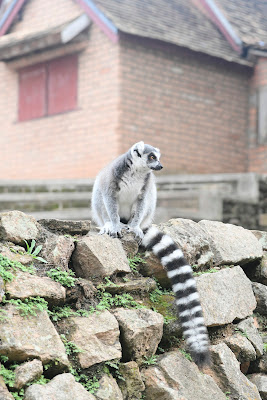
Although the conditions of some houses appear dire, the conservation problems are relatively easy to address. Roof tiles need to be replaced to avoid water ingress, and a sanitation system needs to be provided, as waste is currently buried in shallow pits on each property. The local government has indicated interest in protecting the city's architectural heritage by passing a municipal decree requiring new construction and renovation to be consistent with traditional methods. A local foundation has already repaired 15 significant buildings, built several public gardens, and implemented a micro-credit program to help residents pay for home repairs. WMF believes Watch listing will encourage this process and local support for it






 The Madagascar blue vanga (Cyanolanius madagascarinus) is a bird species in the family Vangidae. It is found in Madagascar, where its natural habitats are subtropical or tropical dry forest and subtropical or tropical moist lowland forest. The blue vanga is 16–19 cm (6.3–7.5 in) long and weighs 19.5–25.5 g (0.69–0.90 oz). Adult males are bright blue in color, with a black line through the eye which extends to base of the bill, as well as above and below the bill. It has a paler blue eye-ring. The tail as well as edges and tips of the wings are black in colour. The underparts and throat are bright white in colour. Females tend to be slightly duller in colour than males, with the underparts also being off-white in colour with a pale orange or light buffy wash. The wings are slightly tinged greenish.
The Madagascar blue vanga (Cyanolanius madagascarinus) is a bird species in the family Vangidae. It is found in Madagascar, where its natural habitats are subtropical or tropical dry forest and subtropical or tropical moist lowland forest. The blue vanga is 16–19 cm (6.3–7.5 in) long and weighs 19.5–25.5 g (0.69–0.90 oz). Adult males are bright blue in color, with a black line through the eye which extends to base of the bill, as well as above and below the bill. It has a paler blue eye-ring. The tail as well as edges and tips of the wings are black in colour. The underparts and throat are bright white in colour. Females tend to be slightly duller in colour than males, with the underparts also being off-white in colour with a pale orange or light buffy wash. The wings are slightly tinged greenish. At bamboos forest we looking for the habitats where we might spot the bamboo lemur ,and after we climbed a litle higher we found two of them during feeding the bamboo leaf. we try to follow them until we got the good one with good view. We also found another specy of lemurs sleeping on the branch.I though it’s mother and son of Red fronted lemurs.Big bird short time shown before we get off to the main trail.
At bamboos forest we looking for the habitats where we might spot the bamboo lemur ,and after we climbed a litle higher we found two of them during feeding the bamboo leaf. we try to follow them until we got the good one with good view. We also found another specy of lemurs sleeping on the branch.I though it’s mother and son of Red fronted lemurs.Big bird short time shown before we get off to the main trail.



 The Fianarantsoa Old City occupies a dramatic hilltop setting once topped with a palace used by the Merina royal family during state visits. While the palace is no longer there, some 500 homes built between 1870 and 1900 by those affiliated with the royal retinue still line the city's picturesque cobblestone streets. Buildings dating from this period survived because a royal edict forbidding commoners from using durable building materials was lifted in 1868. Moreover, the Old City is the only place in Madagascar where nineteenth-century buildings form a coherent architectural ensemble. Some of the buildings included in this listing are still occupied by descendants of their original builders who—because of Madagascar's current economic situation—have been unable to maintain their homes.
The Fianarantsoa Old City occupies a dramatic hilltop setting once topped with a palace used by the Merina royal family during state visits. While the palace is no longer there, some 500 homes built between 1870 and 1900 by those affiliated with the royal retinue still line the city's picturesque cobblestone streets. Buildings dating from this period survived because a royal edict forbidding commoners from using durable building materials was lifted in 1868. Moreover, the Old City is the only place in Madagascar where nineteenth-century buildings form a coherent architectural ensemble. Some of the buildings included in this listing are still occupied by descendants of their original builders who—because of Madagascar's current economic situation—have been unable to maintain their homes. 


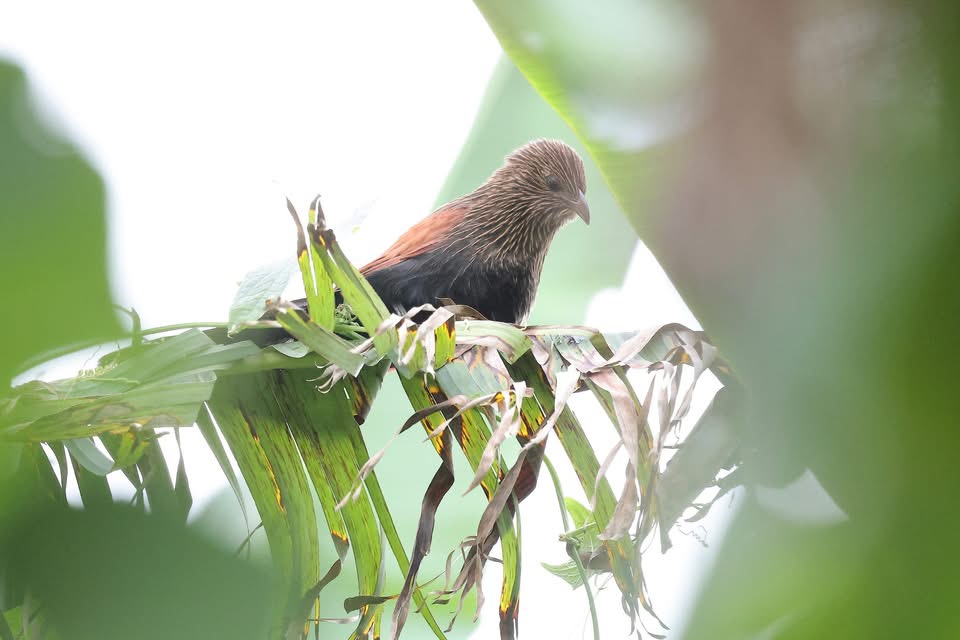
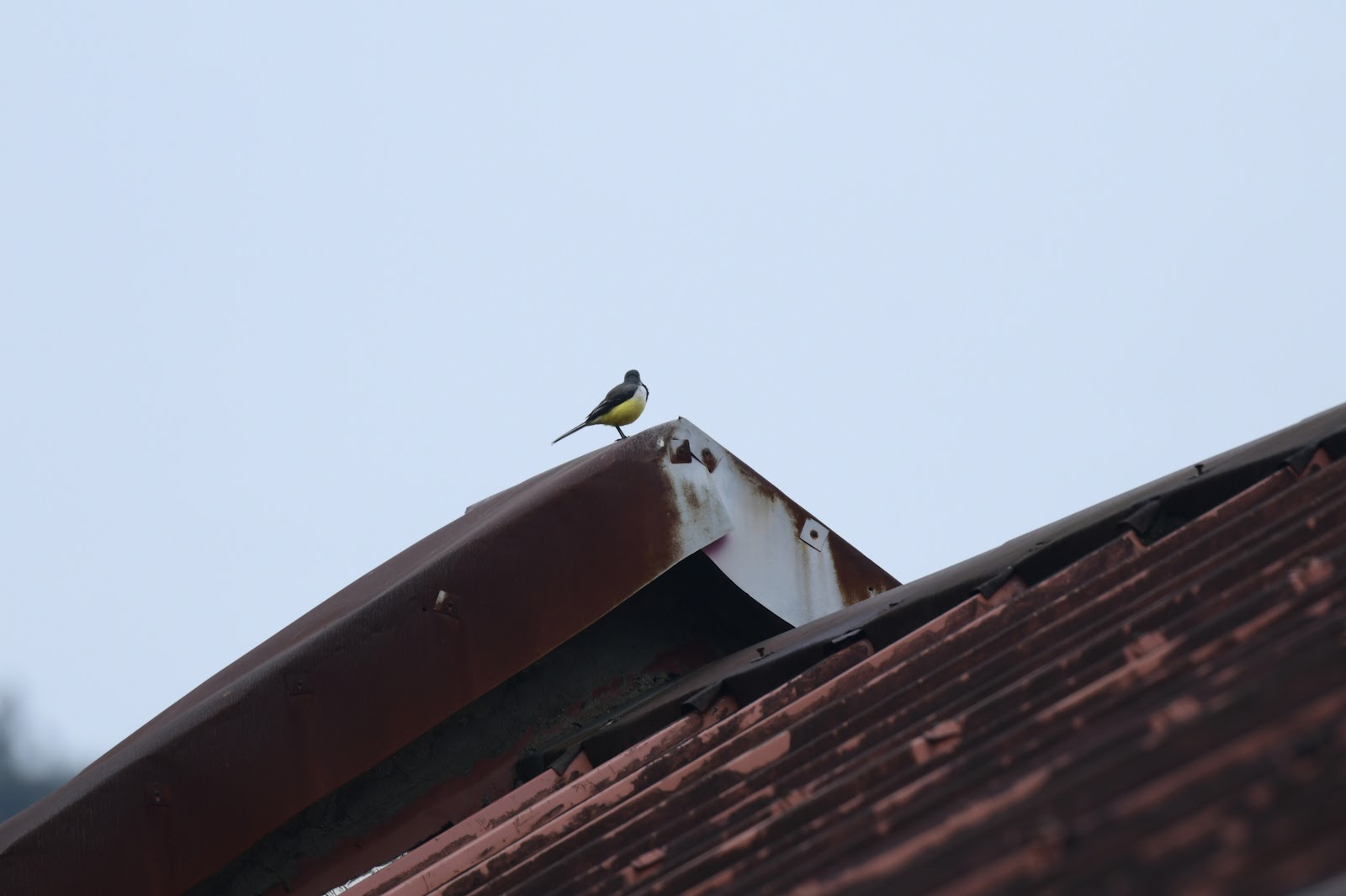








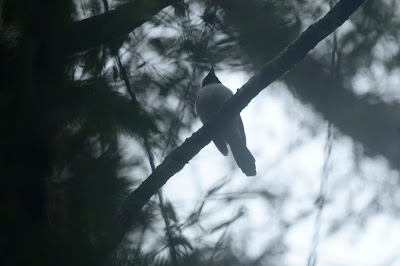








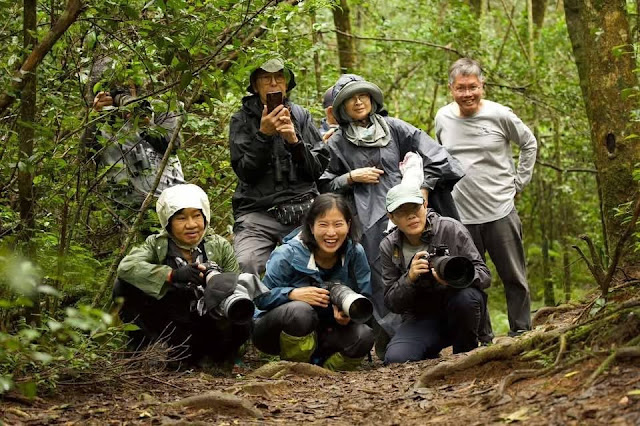







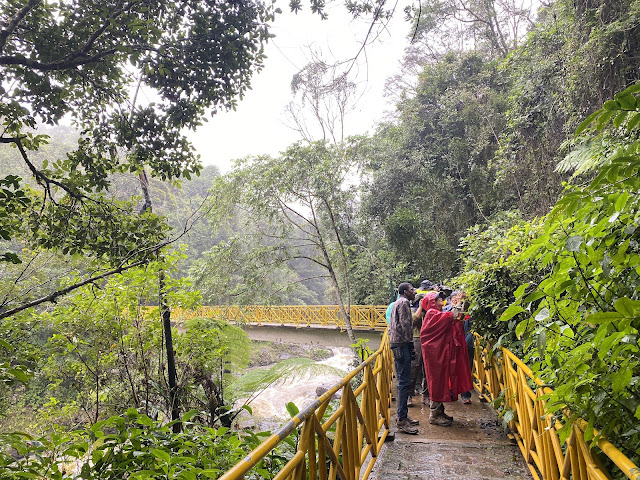
































ไม่มีความคิดเห็น:
แสดงความคิดเห็น